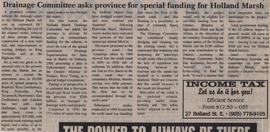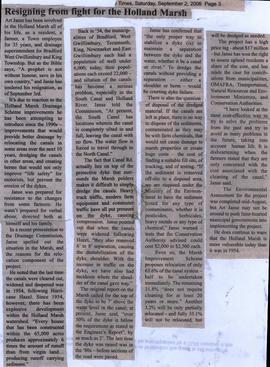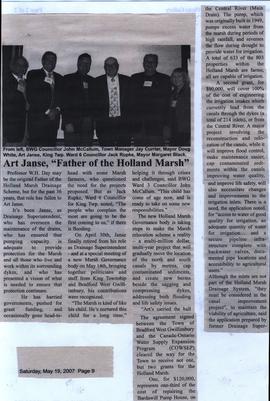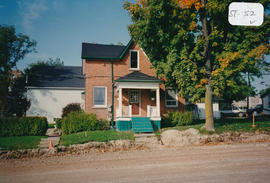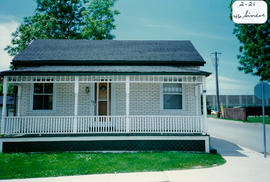Drainage Committee asks province for special funding for Holland Marsh
- CA BWGPL WEG-Mar-PH26543
- Item
- 2006-2008
Parte de WEGWHIST Collection
A proposed drainage scheme to relocate the drainage canals in the Holland Marsh will cost an estimated $8.7 million. This sum is too great for the Marsh farmers alone so they are attempting to extend the assessment area to 65,000 acres of upland property in Bradford West Gwillimbury, King Township, New Tecumseth, Newmarket, East Gwillimbury, and Caledon but this idea has been met with legal challenges. Due to the legal fees surrounding this the Holland Marsh Drainage Committee has asked the province for $2 million in extraordinary funding for the scheme. After being completed in 1930 the 17.5 miles of canals that ring the Holland Marsh have been dredged several times, and after Hurricane Hazel were even widened and deepened. Although, recent studies show that the canal is almost filled in at certain points. Studies have also shown that due to south canal being filled in so much the north canal is handling four times the flow of the south canal. Relocation of the canal is the preferred solution to this problem.
Sem título

